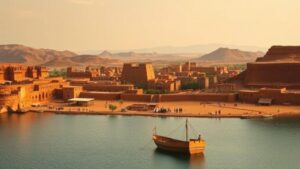Investigating the boiling river of the Amazon, where water temperatures reach scalding levels.
Investigating the Boiling River of the Amazon
The Amazon rainforest is known for its biodiversity and unique ecosystems, but it also harbors an extraordinary natural phenomenon: the boiling river. Located in the Peruvian Amazon, this remarkable river, known as Shanay-Timpishka, features water temperatures that can exceed 100 degrees Celsius (212 degrees Fahrenheit), making it one of the hottest bodies of water on the planet.
Geographical Context
The Shanay-Timpishka is situated in the remote region of the Loreto Province in Peru, near the town of Mayantuyacu. It flows through the rainforest, winding its way around lush vegetation and rugged terrain. Despite its scalding temperatures, the river is an important part of the local ecosystem and the cultural practices of indigenous communities.
The Science Behind the Heat
Many marvel at the boiling river, leading to questions about its origin. The extreme temperatures are attributed to geothermal activity beneath the Earths surface. This phenomenon occurs when hot volcanic or tectonic activity heats groundwater, which then forces its way to the surface, creating naturally hot water bodies. role of subduction zones and the presence of hot springs help explain the rivers unique thermal characteristics.
- The river extends approximately 6.4 kilometers (4 miles) in length.
- Water temperatures can reach anywhere between 86 to 100 degrees Celsius (186 to 212 degrees Fahrenheit).
- This river is claimed to have been discovered scientifically only in 2011, although local tribes have known about it for centuries.
Impact on Local Ecosystems
The boiling river is not just a geological marvel; it plays a vital role in local biodiversity. The extreme heat influences the biology of species inhabiting the area. While many conventional river species cannot survive due to the high temperatures, some unique organisms have adapted to thrive in this environment.
For example, certain extremophiles, or heat-loving microorganisms, have been discovered in these waters. r presence underscores the adaptability of life and highlights the importance of preserving such unique ecological settings. The ecosystem surrounding the river includes a variety of flora and fauna that have adapted to cope with extreme heat, displaying resilience and ecological harmony.
Cultural Significance to Indigenous Communities
The boiling river holds spiritual significance for the indigenous people residing in the region, including the Matsés tribe. They refer to it as “Shanay-Timpishka,” which translates to “boiled with the heat of the earth.” The river is not only a geographical landmark but an integral part of their cultural practices and beliefs.
Local shamans often utilize the river for traditional healing rituals, believing that the water possesses mystical properties. Rituals commonly involve the use of hot stones from the riverbed, which are thought to enhance the therapeutic effects of local herbs and plants used in healing ceremonies.
Challenges and Conservation Efforts
Despite its remote location, the boiling river faces environmental challenges. Deforestation and climate change pose threats to the Amazon ecosystem as a whole, impacting water quality and biodiversity in the region. Environmentalists and indigenous organizations are working collaboratively to promote conservation efforts aimed at protecting the river and surrounding forest.
Efforts include:
- Conducting scientific research to monitor natural changes in the river.
- Raising awareness about the importance of protecting biodiversity.
- Engaging local communities in sustainable practices that minimize environmental impact.
Real-World Applications and Future Research
The study of the Shanay-Timpishka presents opportunities for research into thermophilic organisms, which could provide insights into potential biotechnological applications. Understanding how life thrives in such extreme conditions may lead to innovations in medicine, agriculture, and environmental management.
Plus, ongoing research could help monitor the impacts of climate change on the river, providing critical data that can inform conservation initiatives. Protecting this natural wonder is not just an ecological necessity but also a cultural imperative for the people who hold the river sacred.
Actionable Takeaways
Investigating the boiling river of the Amazon offers valuable lessons on the interconnectedness of geology, ecology, and cultural heritage. Here are some key takeaways:
- Recognize the importance of geothermal phenomena in understanding our planets dynamics.
- Support conservation efforts aimed at protecting unique ecosystems and indigenous cultures.
- Stay informed about research findings related to extremophiles and their potential applications.
The boiling river stands as a testament to natures power and complexity, urging us to explore, understand, and respect the delicate balance of our natural world.


